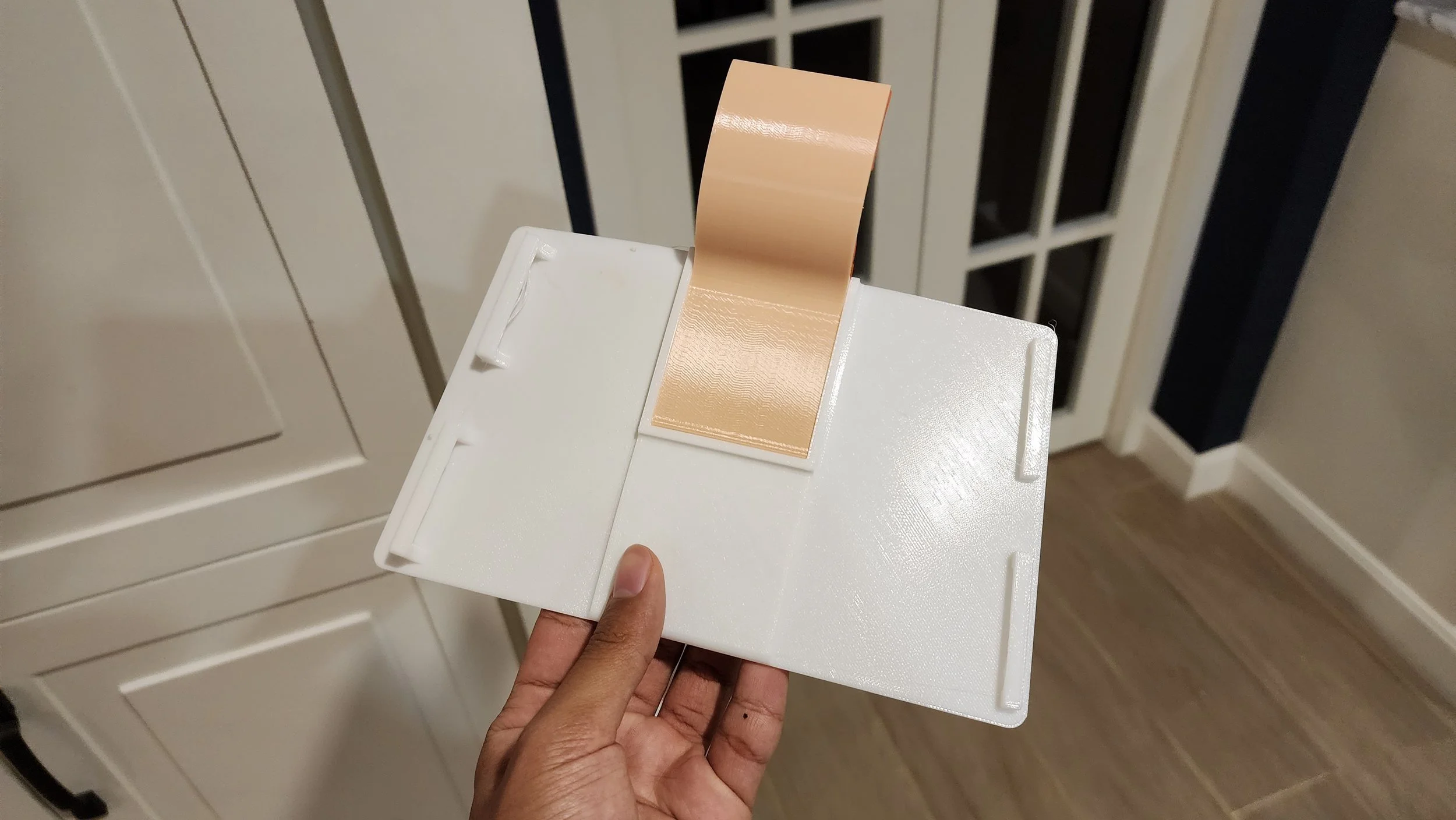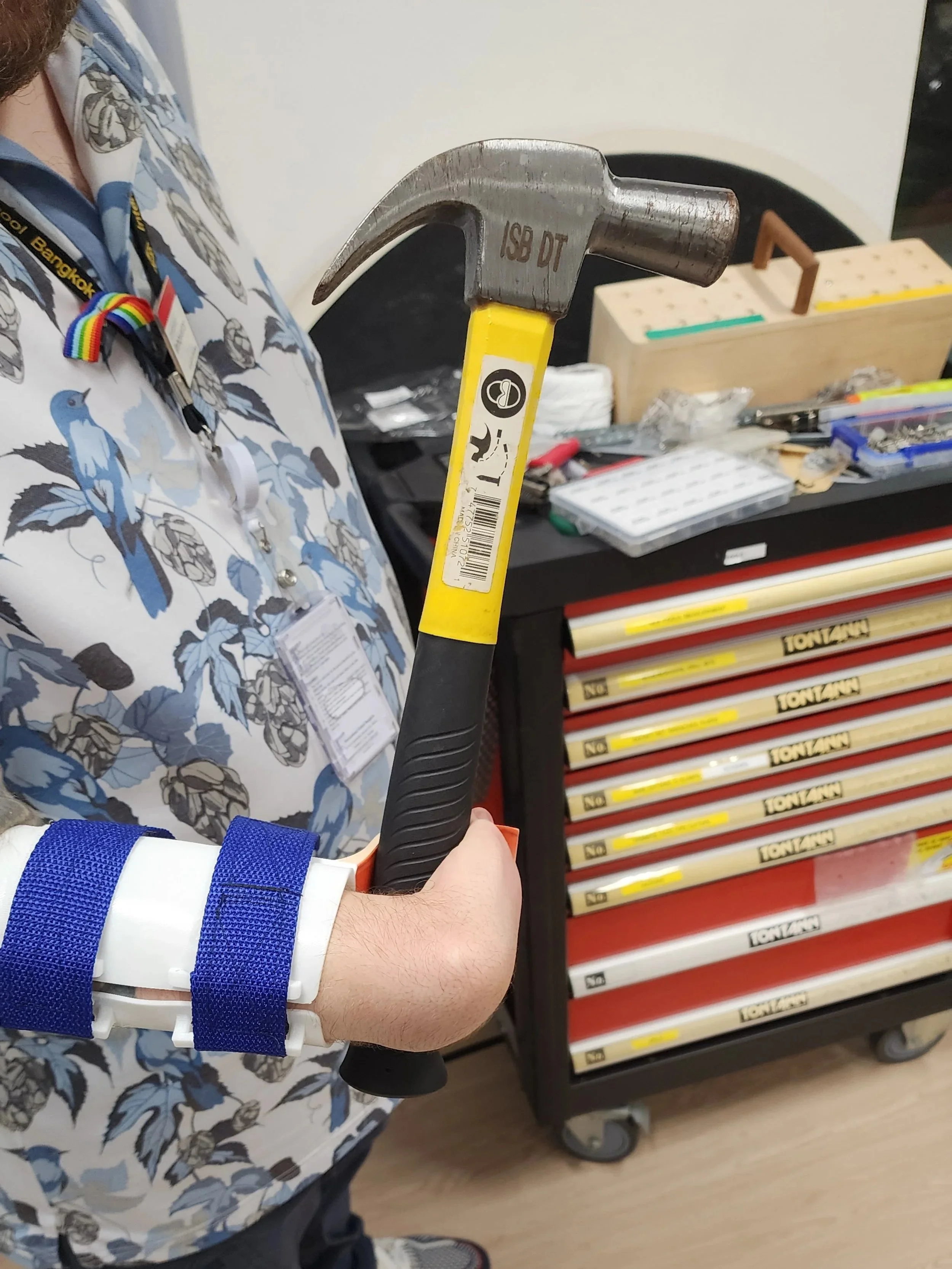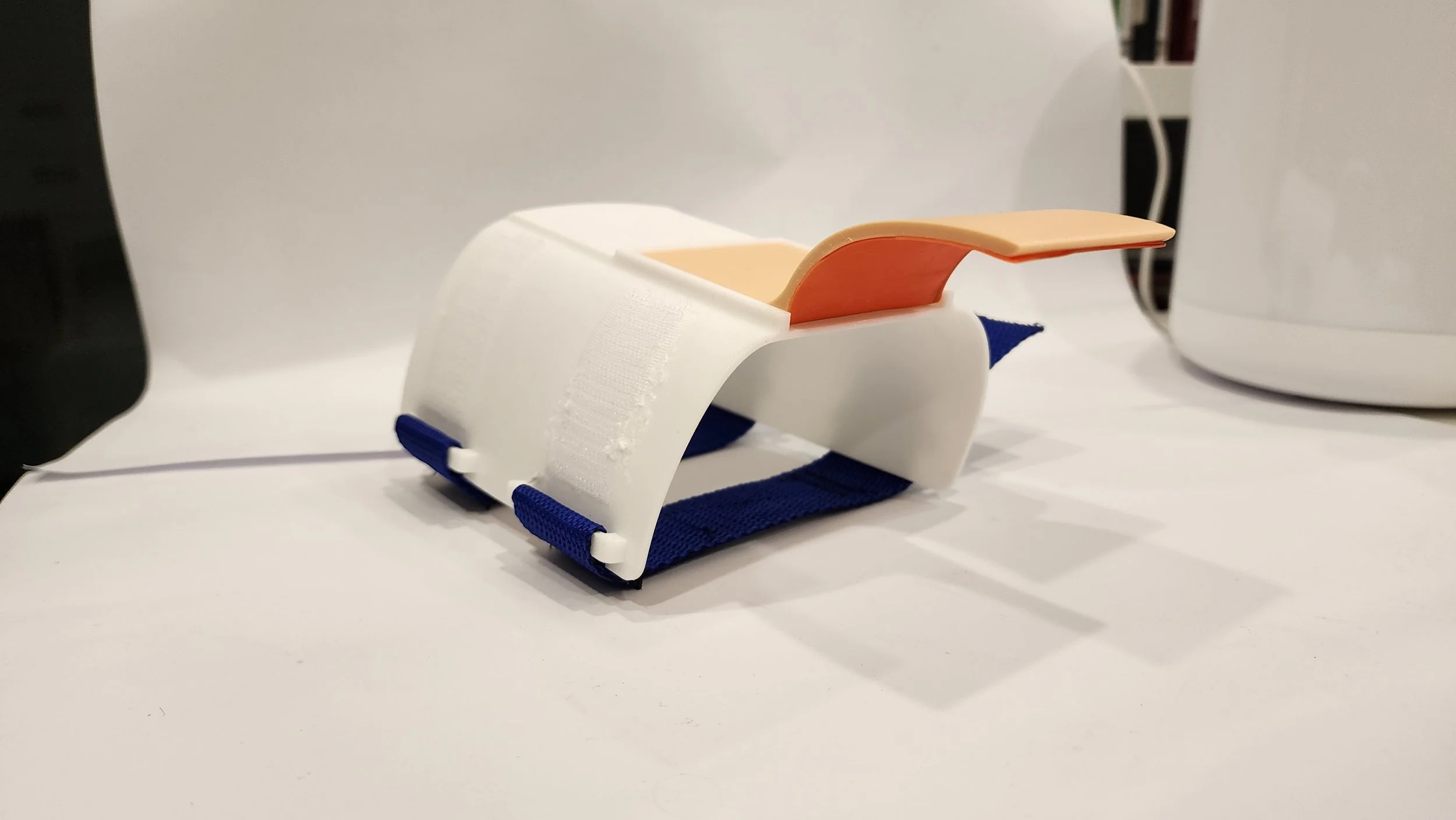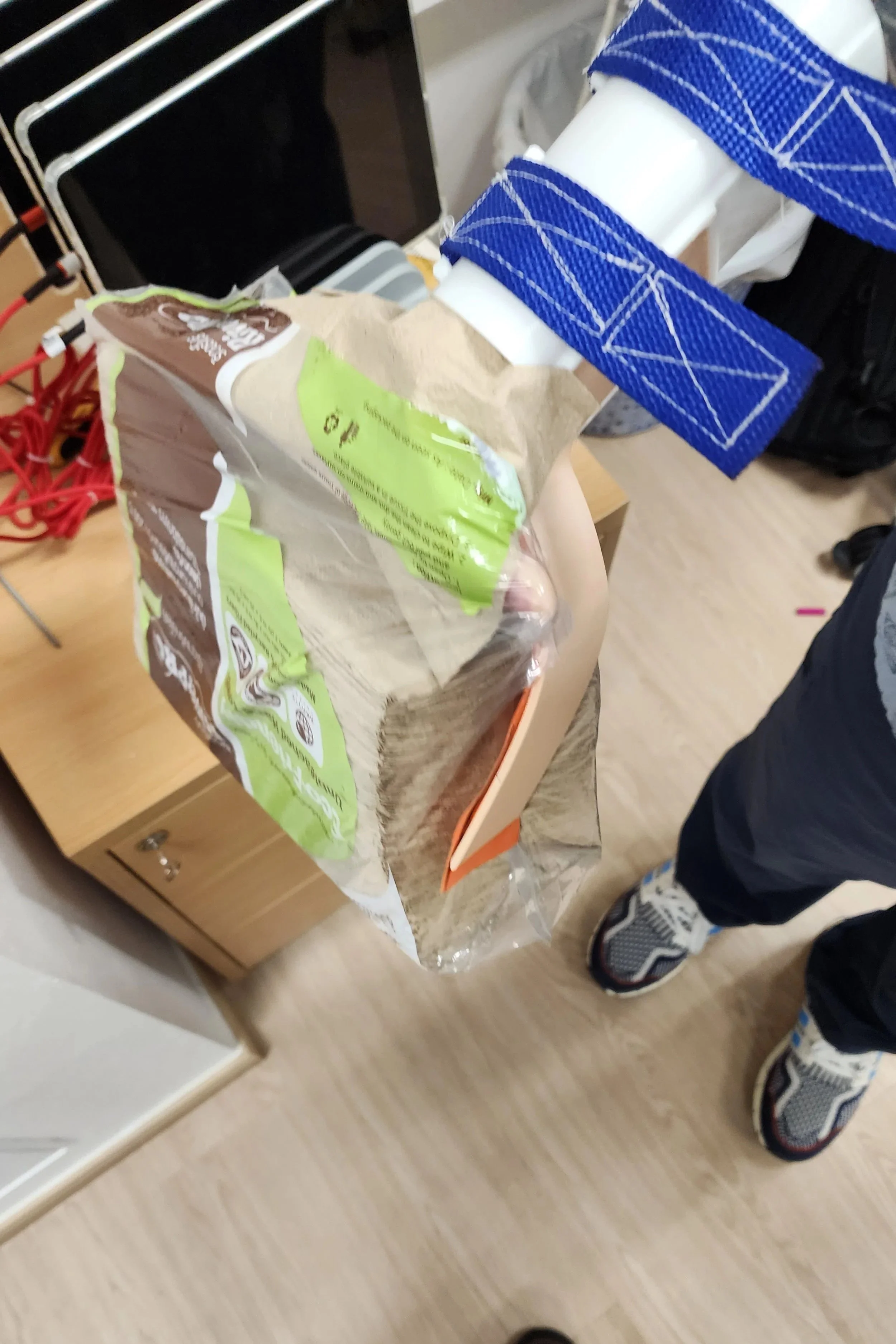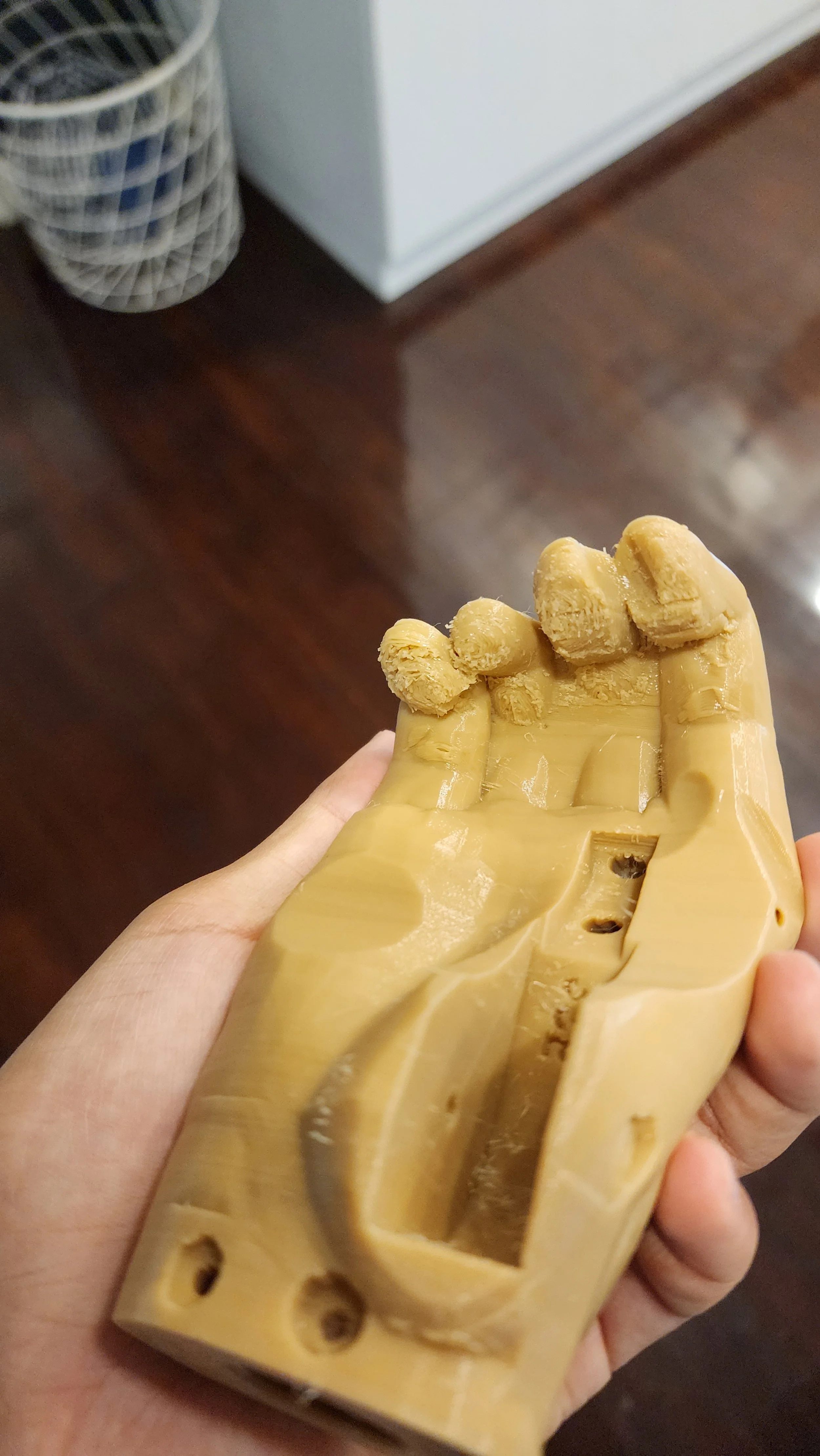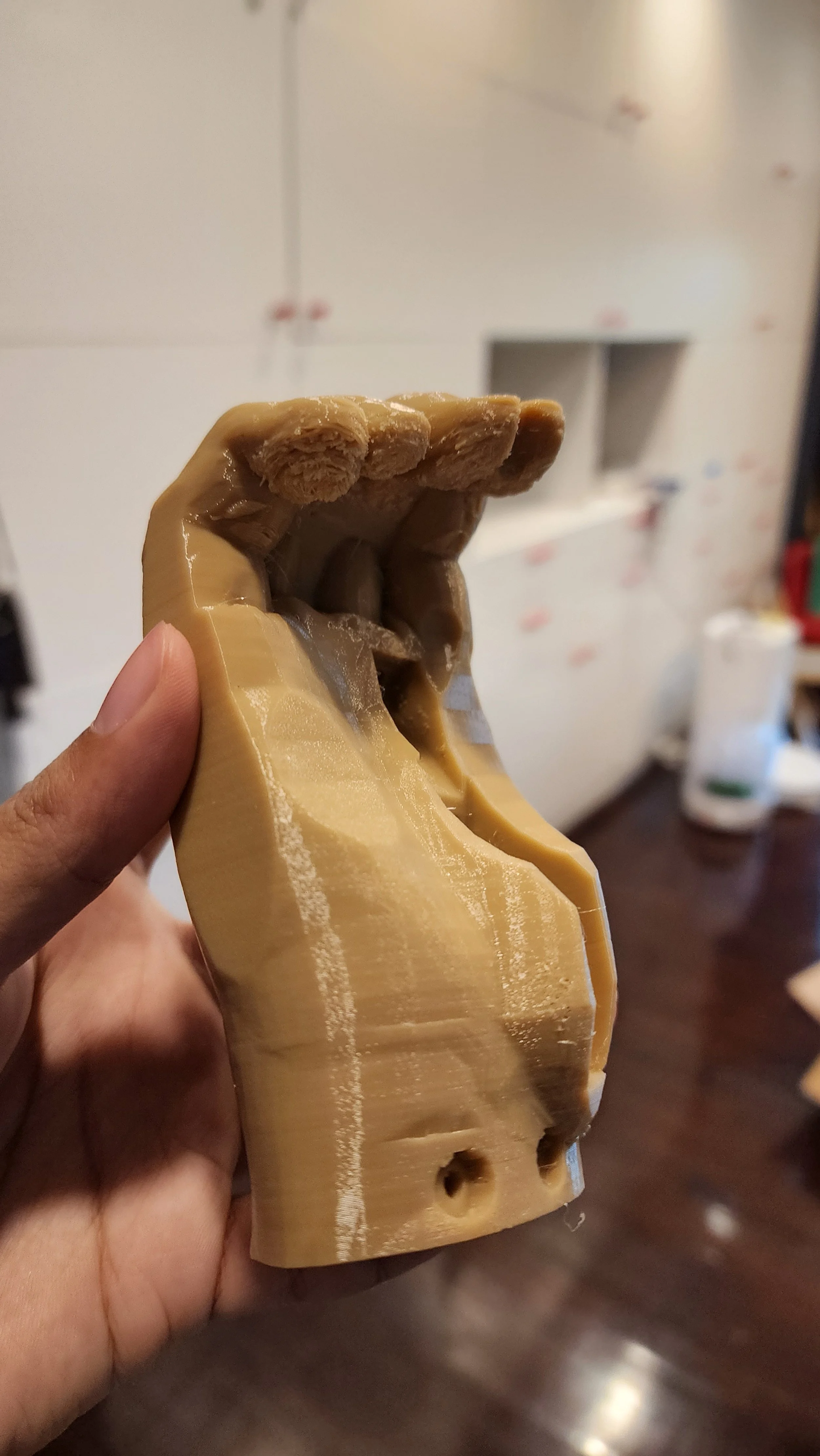Custom Prosthetic Design Process
This prosthetics design project was able to provide two people with hand disabilities working prosthetics that allow their disabled hand to be utilized to grab onto various objects. I leveraged human centered design and iterative design process along with designs and material choices of other 3D-printed prosthetics that I was printing for ThaiReach to make these devices.
The first recipient I designed for was an individual who was in a motorcycle accident, damaging his hand and having to have parts of his hand reattached surgically. He has lost most motor function in his wrist and fingers.
Initial Prototype
After considering multiple prosthetic designs, I set on making a simple, rigid, yet effective device. This would reduce the possibility of error as the more moving parts there are, the more possibilities of errors arise. After the initial fitting, I realized that there were many improvements I needed to make:
Improve comfort.
Improve the grip on the arm.
Usability and ease of putting on/taking off.
The hand supporting part needed to be angled to align with the tilted hand.
Prototype 2
Inspired by TPU prosthetic sockets that I was printing for ThaiReach, I revamped the whole design by replacing stiff PLA with flexible TPU. I designed a new socket that would fit and encapsulate the arm, being in contact with the skin all around. The prosthetic would be secured on the arm using nylon straps and velcro. I designed a slot for hand-supporting devices to be attached rather than including the hand-supporting device on the socket for customizability.
Motorcycle Accident Survivor
Prototype 3
The TPU design performed much better than the original stiff PLA version. The first print was too wide and 4mm thick, making it hard to wear. I reduced the thickness to 2mm and narrowed the width, which greatly improved comfort and usability.
The arm socket included a slot for attaching a hand-support device, allowing custom prosthetics to be made for each person while keeping the same socket.
I designed the hand support by rough approximation, but it ended up too far from his hand to be usable since his hand could only move 2–3 cm back and forth.
Final Design
This was good progress. All I needed to do was to redesign the hand-supporting part and reduce the distance that it was from the hand. I designed a flat part with a slight curve at the end to increase object grip.
The prosthetic worked better than expected. It allowed him to grab hold to a water full water bottle. He suggested implementing a slight curve in the support to align with a water bottle rather than being flat.
After his surgery to repair his nerves in the near future, he hopes that he will be able to utilize the prosthetic better.
Arm measurement
Initial Prototype
I brought the second variation of the prosthetic device I designed in the project above with the TPU arm socket for Mr. Bycraft to try. I didn’t intend for the hand support part to align with his hand. I just wanted to test the fitting of the arm socket.
Coincidentally, the arm socket fit almost perfectly! He could put it on easily and wear it comfortably
I intended to redesign the hand support, but he tried lifting and grabbing onto objects with the support that was not designed for his arm and it still worked quite well.
Prototype 2
At this point, I realized that I had created a universal prosthetic socket that fitted anyone with an arm. I readjusted the socket so that the diameter would be slightly smaller near the wrist.
I also redesigned the hand supporting part so it is shorter and closer to his hand. It worked quite well and I was quite pleased.
It was slightly too close to his hand still, but it still worked to hold some items. He could not, however, hold larger items like pipes since there was not enough clearance between his hand and the supporting part
Final Design
I redesigned the hand-supporting device to be 2 cm farther from his hand. This worked. He was able to grab onto everything including larger objects like pipes.
I added foam padding to make it more comfortable to wear. This made the socket grip even better.
Overall, he was very happy with the end product and so was I! A real tangible product with real-life impacts is satisfying and fulfilling. As long as I am alive, I will never stop designing for the good of humanity.
Further Improvements
Design a detachable mechanism that allows for hand-supporting parts to be swapped out easily. This is useful for using the prosthetic with different applications without changing out the arm socket. A support for holding a spoon is different from a support made for holding weights.
Get rid of the flat part on the socket that the hand-supporting part attaches to. The flat section that the hand supporting part attaches to the socket causes slight discomfort. A different hand-supporting design is to be explored. It could be made with TPU to increase flexibility or a different design that splits the hand support into different sections to reduce the effect on the socket.
Improve the fastening mechanism. Velcro straps may be difficult for those with motor disabilities. Different fastening and tightening mechanisms should be explored such as rotating buckles usually found on shoes.
A great lesson I’ve learned from this is that there are always things that you can do to help others. Be grateful for what you have, and always offer help to others if you have the ability and resources to do so.
The second recipient is Mr.Bycraft, a robotics teacher at my high school has a hand disability.
Mr. Bycraft
3D Printing Prosthetics For ThaiReach
1.
I was assigned to attempt printing the “Charin Socket” with TPU. TPU is a material that is notoriously difficult to print due to its hygroscopicity and its elastic material properties in general. After countless trials and errors, I was able to consistently print TPU at very high quality by drying the TPU in a fruit dehydrator and adjusting printing presets until perfection.
I sent the Charin Sockets that I printed to ThaiReach. They praised my prints for being very high-quality and were put on display at their booth at the Startup x Innovation 2023 convention at the QSNCC.
ThaiReach is a local organization based out of Sirindhorn hospital in Khon Kaen. They 3D print and donate prosthetics for low-income amputees all across Thailand.
2.
I was then tasked to try printing the hand that would attach to the socket. It is made out of TPU, and because of this, the printed supports within the socket were quite difficult to remove, leaving dirty artifacts. When I tried printing the gripper hand, I removed the support fully when slicing. Even though the internal socket of the hand had a 90-degree overhang, it was only a short distance to travel mid-air so the printhead easily made the connection. This improved the quality of the print by huge margins.
I met ThreeBees, a local 3D printing filament brand in Thailand. Through ThaiReach, they supported me with 2 kilograms of skin-colored TPU. I was able to print one hand successfully with their filament. However, the material was quite sticky and tangled itself in the spool.
To my knowledge, the prosthetics that I printed for ThaiReach have been fitted on at least three recipients.
















